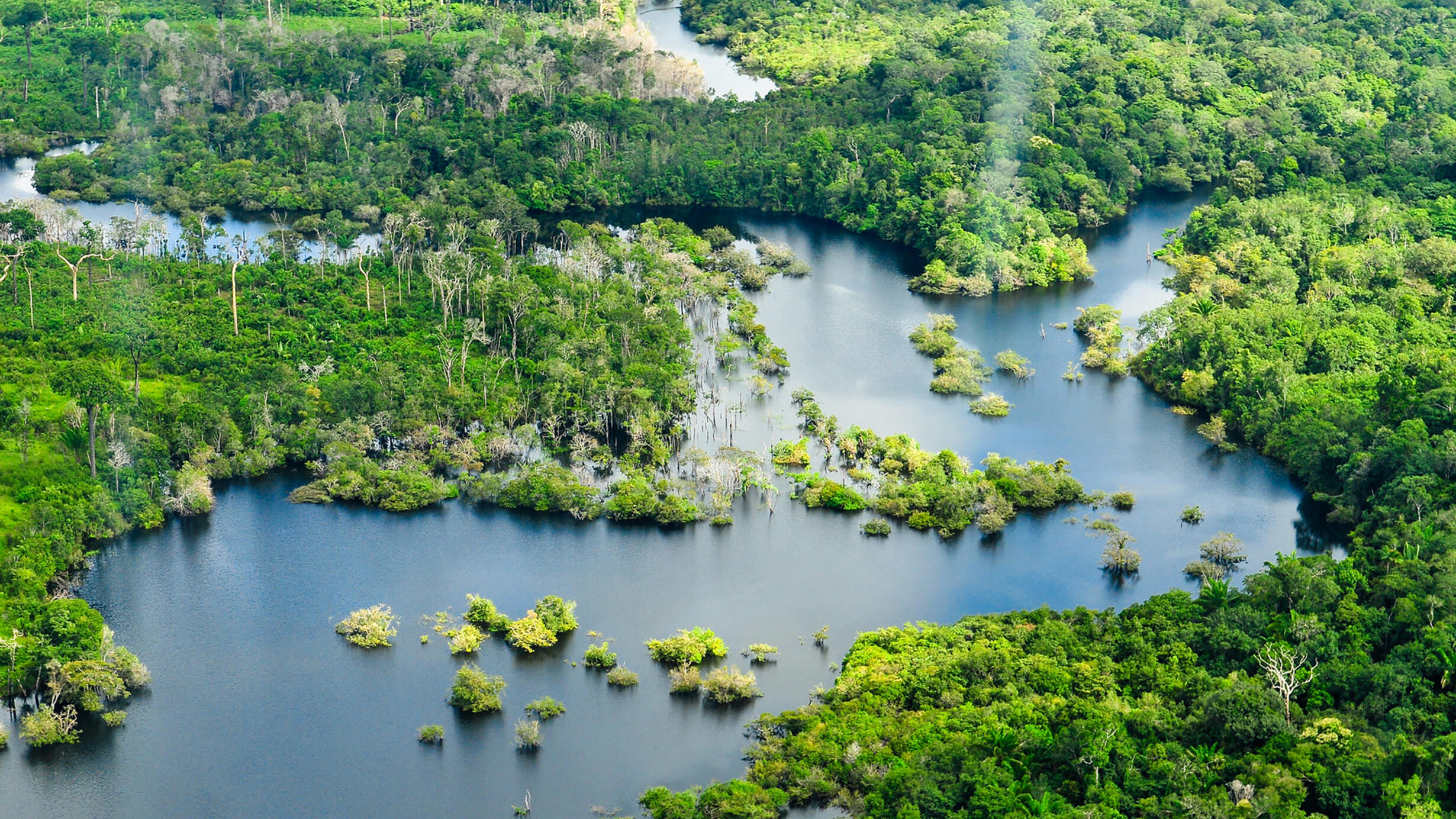 Aerial view of the Amazon Rainforest, near Manaus, the capital of the Brazilian state of Amazonas, Brazil.
Aerial view of the Amazon Rainforest, near Manaus, the capital of the Brazilian state of Amazonas, Brazil.Neil Palmer/CIAT
Researchers have long wondered—and argued—about how the Amazon’s rich biological diversity arose and accumulated, and a new study led by Museum ornithologists shows how rapidly changing small river systems have played a role.
“Early evolutionary biologists like Alfred Russel Wallace noticed that many species of primates and birds differ across opposite riverbanks in the Amazon, and ornithologists now know that rivers are associated—in one way or another—with the origin of many avian species,” said Lukas Musher, a postdoctoral researcher at the Academy of Natural Sciences of Drexel University and a recent comparative biology Ph.D. graduate of the Museum’s Richard Gilder Graduate School who is the lead author of the new study published today in the journal Science Advances. “Moreover, accumulating geological evidence has suggested that these rivers are highly dynamic, moving around the South American landscape over relatively short time periods, on the order of thousands or tens of thousands of years.”
The lowland rainforests of the Amazon River basin harbor more diversity than any other terrestrial ecosystem on the planet. The Amazon River basin contains about 18 percent of all trees on Earth and carries more fresh water than the next seven largest river basins combined.
Courtesy L. Musher
To investigate how the movement of rivers across the landscape has influenced the accumulation of bird species in the Amazon, the researchers sequenced the genomes of six species of Amazonian birds.
“Even though birds can fly, our study confirmed that current rivers across the Southern Amazon rainforest, even relatively small ones, are highly effective at isolating populations of these six species, which leads to genomic divergence and ultimately speciation,” said the study’s senior author Joel Cracraft, Lamont Curator and curator-in-charge in the Museum’s Department of Ornithology.
The scientists also identified populations of birds that should be described as separate species but have been considered a single species until now.
“Though we know Amazonian biodiversity is unmatched by any other terrestrial ecosystem, we demonstrated that its species richness may be greatly underestimated even in well-studied groups such as birds,” Musher said.
These results confirm other studies that have shown that the southern Amazon basin, which is threatened by rapid, ongoing deforestation, is home to a diversity of species that is not yet fully known or recognized but under threat.
“Many of the distinct populations are relatively young and endemic to a small Amazonian region,” said Musher. “Meaning that a large portion of the Amazon’s birds may be threatened with loss to imminent extinction.”